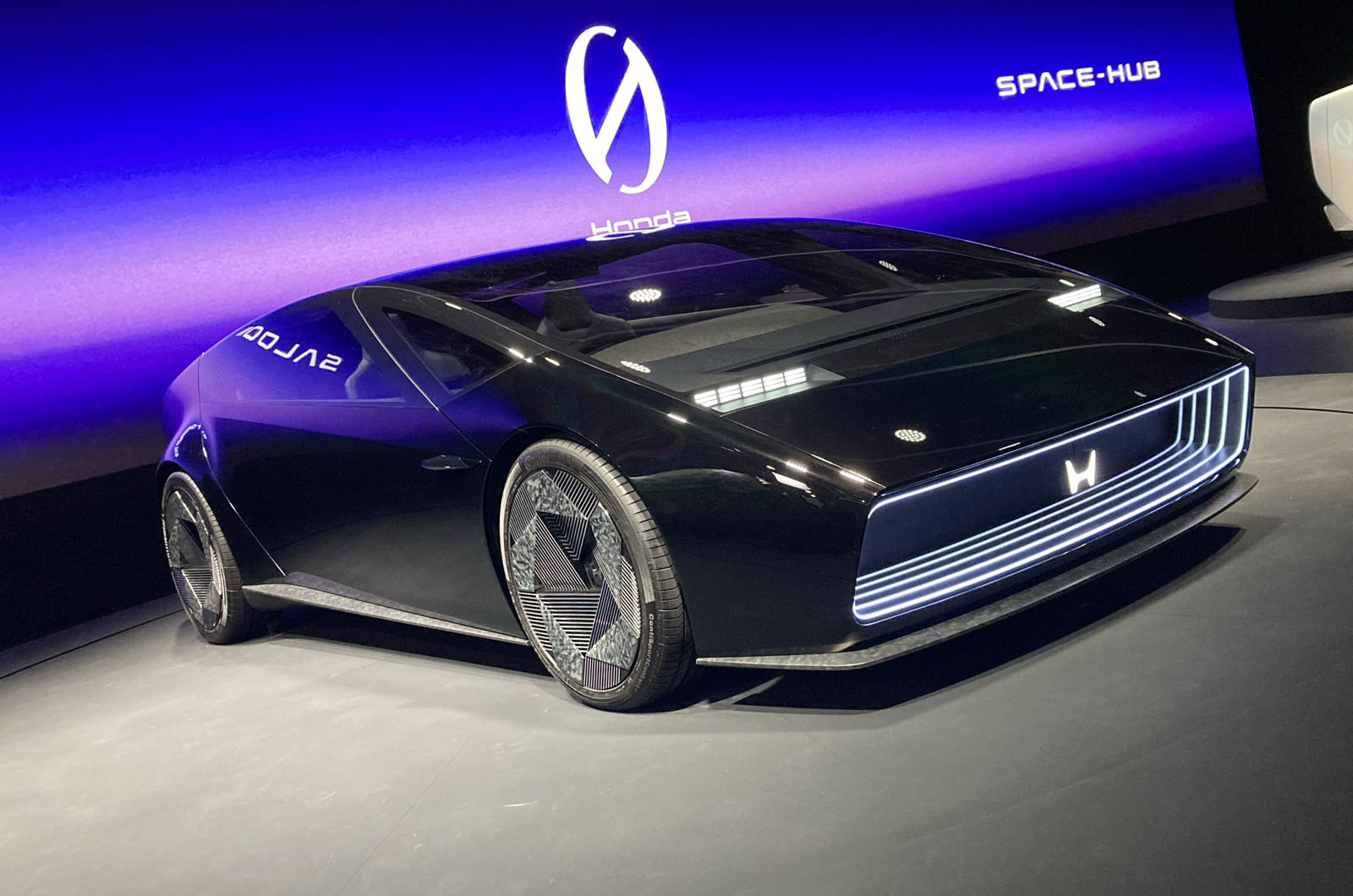Departing so radically from the design of current Honda models was all about “starting from zero”, said Miniami. “We rethought the design from a human-centric viewpoint and this is what we landed on.”
Its rakish silhouette stems from Honda’s desire for “lower and wider vehicles”, said Minami, but it has not been conceived as a dedicated sporting EV to rival the likes of the Porsche Taycan.
“We try to aim for the ultimate functional beauty, and we landed on this sporty design. Giving it more interior space while making it sporty at the same time is difficult, but that is what we are pursuing – and of course we do want it to be sporty.”
Minami was quick to deny that Honda has taken inspiration from any past models in creating the Saloon concept, with its wedge-shaped silhouette, bluff rear end and pixel-style LED headlights.
He described the design language as being rooted, instead, in creating the “ultimate functional beauty”. “We’re not particularly aiming for this shape,” he said, “but we’re trying to create the shape of the function while making it emotional.”
While the exterior is described as nearly ready for showrooms, the interior is “more show car”, said Minami. The final cockpit design is scheduled to be shown in the near future.
The concepts haven’t been designed to preview direct replacements for any existing Honda models, but the production cars they inspire will sit at the heart of Honda’s global EV line-up.
As a signal of their revolutionary billing, they wear a reinterpreted version of Honda’s H-mark emblem, which will be rolled out to production cars from 2026.

Robert Johnson is a UK-based business writer specializing in finance and entrepreneurship. With an eye for market trends and a keen interest in the corporate world, he offers readers valuable insights into business developments.








